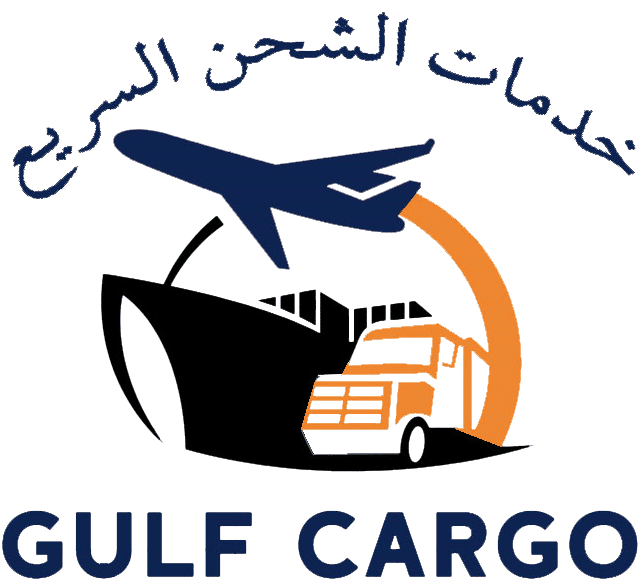
Moving goods by container shipping from the United Arab Emirates to the Gulf region is a vital backbone of modern trade in the Middle East. Whether you’re a manufacturer in Dubai exporting to Qatar, or an importer in Bahrain sourcing from Abu Dhabi, smooth container logistics can save you time, money, and stress. In this guide, we’ll walk through key aspects—from routes and ports to pricing, documentation, and tips for safer shipments.
Why choose container shipping?
Container shipping remains one of the most cost-effective and reliable modes for transporting large-volume or heavy goods between UAE and Gulf (GCC) countries. Its advantages include:
-
Cost efficiency: You pay for the container space, making it more economical per unit of cargo.
-
Security & protection: Goods are packed in sealed steel containers, reducing theft or damage risks.
-
Scalability: Whether it’s one 20-foot container or multiple 40-foot units, you can scale to your needs.
-
Standardization & integration: The global container system ensures your cargo can move seamlessly between sea, road, and inland transport.
Because the Gulf states are geographically close and often connected by good road and maritime links, container shipping between UAE and Gulf markets is especially practical and efficient.
Major ports involved
In the UAE, three ports frequently play a central role in Gulf-region container shipping:
-
Jebel Ali Port, Dubai — the largest in the Middle East with world-class throughput and connectivity. Wikipedia
-
Khalifa Port, Abu Dhabi — a deepwater, modern terminal with automated systems and growing capacity. Wikipedia
-
Port Khalid, Sharjah — handles substantial container traffic in the northern UAE, and often serves as a gateway for Sharjah-based trade. Wikipedia
-
Fujairah Port — though on the east coast, it offers strategic alternatives in certain routes. Wikipedia
On the Gulf side (Qatar, Bahrain, Kuwait, Oman, etc.), their ports may accept direct feeder or transshipment arrivals. The container may be unloaded in a UAE port and then carried onward by road or coastal services depending on location and agreements.
Modes & volume options: FCL vs LCL
When planning your container shipment, you typically decide between:
-
Full Container Load (FCL): You book the entire container (e.g. 20‐ft or 40‐ft) exclusively for your cargo. Best when your goods fill a large share of the container or you want minimal handling.
-
Less-than Container Load (LCL): You book just a portion of a container; your goods share space with cargo from other shippers. More cost-effective for smaller shipments, though it may involve consolidation and deconsolidation delays.
In practice, if your shipment volume is large or consistent, FCL often proves faster, safer, and simpler. For occasional or partial loads, LCL gives flexibility and lower upfront cost.
Cost factors & pricing
Estimating the cost of container shipping between UAE and Gulf markets depends on multiple variables. Here are the key cost drivers:
-
Container size & type
A 40-ft container costs more than a 20-ft one. Specialized containers (e.g. reefers, open-top) add extra premium. -
Distance & route complexity
Even within the Gulf, some ports are more remote or require coastal transshipment, which can raise costs. -
Fuel & surcharges
Fluctuating fuel prices impose variable bunker and congestion surcharges. -
Customs & regulatory costs
Each country has its import duties, taxes, inspection fees, documentation, and port charges. -
Handling, inland haulage, and drayage
You’ll pay to move containers from warehouse to port, and from arrival port inland to final destination. -
Seasonality & demand cycles
During peak demand seasons or busy trade spikes, freight rates may rise.
Because these factors interrelate, it’s not easy to fix one flat number. But you can request accurate quotations from freight forwarders or shipping lines once you have the cargo volume, container type, origin port, and destination port.
Transit times & scheduling
The good news is that because the Gulf states are relatively close to the UAE, transit times tend to be short compared to intercontinental routes. For many routes, goods can reach Gulf ports in just 1 to 3 days or even on the same day, depending on road or sea connectivity, customs, and traffic conditions.
That said, delays may occur due to port congestion, documentation issues, inspections, or seasonal factors (e.g. weather, holidays). To avoid surprises, build buffer time into your schedule and track your shipment proactively through your forwarder or shipping line.
Documentation & regulatory compliance
Proper paperwork is crucial to ensure your containers pass smoothly through customs and port formalities. Common documents and compliance steps include:
-
Commercial invoice: Details of goods, value, seller, buyer, quantity, etc.
-
Packing list / manifest: Breakdowns of what’s in every package or pallet in the container.
-
Certificate of origin / trade agreements: Some Gulf states have trade agreements with UAE that may allow tariff reductions; proper origin certificates help.
-
Customs declarations: You must file import/export declarations as required by origin and destination authorities.
-
Licenses / permits: Some goods (e.g. controlled, hazardous, food, medical) require special permits or certifications.
-
Bill of lading / sea waybill: The legal transport document issued by the shipping line.
-
Insurance coverage: Marine cargo insurance is advisable to protect against loss or damage.
-
Inspection / fumigation certificates: If required by local rules.
Working with an experienced freight forwarder helps you navigate the exact regulatory and procedural demands for each Gulf country to minimize delays or surprises.
Choosing a reliable freight partner
A shipping company or freight forwarder with Gulf-UAE expertise is a huge asset. Here are qualities to look for:
-
GCC regional experience: They should understand local customs, regulations, and relationships.
-
Network of agents & offices: Presence in both UAE origin and Gulf destination ensures smoother coordination.
-
Transparent quoting & tracking: A partner who gives detailed cost breakdowns and real-time updates.
-
Container handling capacity & quality: They should be able to source good containers, manage loading/unloading, and handle special cargo.
-
Customs clearance capability: They should be able to handle all port, customs, and regulatory work for you.
-
Reliability & reputation: Check references, reviews, and track record for clean on-time delivery.
For example, some UAE logistics firms offer integrated sea, road, warehousing, and customs services tailored for GCC shipping. Clarion+1
Tips for smoother container shipping
Here are some practical tips to help ensure your container shipments between UAE and Gulf go smoothly:
-
Plan ahead
Don’t wait until the last minute. Book your container early, especially just before busy trade periods (e.g. Ramadan, festivals). -
Consolidate shipments
If possible, combine multiple smaller loads to fill a container. You often save on per-unit cost. -
Proper packing & labeling
Secure goods well, avoid overstacking, label clearly. This reduces damage risk and speeds inspections. -
Check container quality
Inspect container condition (doors, seals, structural integrity) before loading. -
Understand destination rules
Each Gulf country has slightly different customs rules, tariffs, and inspection regimes. Work with your forwarder to align with site-specific norms. -
Track shipments actively
Use shipment tracking tools and stay in contact with the carrier at all stages, from port loading to delivery. -
Buffer time & contingency planning
Allow for unexpected delays (weather, port congestion, clearance) so your supply chain isn’t disrupted. -
Maintain clear documentation
Mistakes or missing paperwork often cause delays. Double-check before departure.
Sample scenario: Dubai → Doha container
Let’s say a UAE exporter in Dubai wants to send a 20-foot container of manufactured goods to Doha, Qatar.
-
They choose Jebel Ali Port for origin.
-
The container is booked as FCL because it’s nearly full.
-
Freight forwarder handles inland drayage to the port, customs export clearance, loading, and shipping line booking.
-
The sea (or feeder) or coastal service carries the container to the port of Hamad in Doha (or nearby Qatari terminal).
-
At arrival, Qatar customs handles import clearance, inspections, duties, and inland haulage to the buyer.
-
Transit might take 1–2 days, depending on route and handling.
-
Final delivery is done inland via trucking from Doha port to the buyer’s location.
This illustrates the efficiency of Gulf-region container trade under good planning and logistics support.
Challenges & risks to consider
No logistics plan is without risks. Some of the challenges you should watch out for:
-
Port congestion or delays: Busy seasons or infrastructure limitations can slow container handling.
-
Regulatory changes: Tariff shifts, import rules, or sudden policy changes in Gulf states can impact cost or clearance.
-
Fuel & surcharge volatility: Sudden increases in fuel can change freight surcharges.
-
Customs inspections or rejections: Improper documentation or misdeclared cargo can cause hold-ups or fines.
-
Damage, theft, or mishandling: Although containers are safer than open transport, risks still exist—insurance and good packing mitigate this.
-
Transshipment risks: If containers are moved between ships or modes mid-route, there’s higher handling.
Being proactive and working with trusted logistics partners helps minimize these risks.

